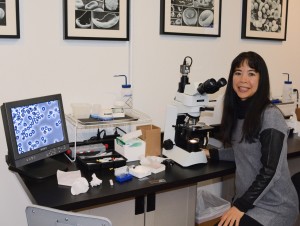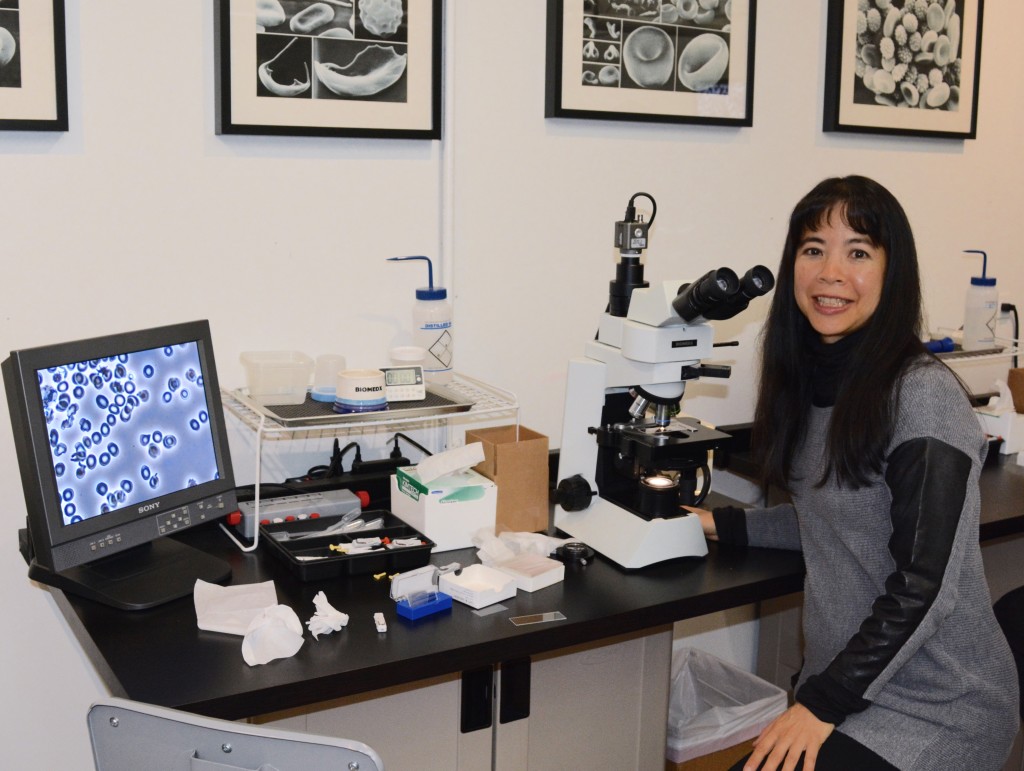Life is in the Blood
 The title of this blog post is actually taken from the scripture in Leviticus 17:11, “For the life of the flesh is in the blood…” Are you familiar with the concept that life is in the blood? Interestingly enough, you can learn a great deal from looking at your own live blood through a microscope. In fact, this could provide some important clues as to the state of your health.
The title of this blog post is actually taken from the scripture in Leviticus 17:11, “For the life of the flesh is in the blood…” Are you familiar with the concept that life is in the blood? Interestingly enough, you can learn a great deal from looking at your own live blood through a microscope. In fact, this could provide some important clues as to the state of your health.
It was an exciting and fascinating time for me in Chicago going through a course and receiving hands-on training in live blood microscopy. Live blood microscopy allows you to see your blood live under a microscope where the light source is shined through your blood from the side instead of directly through it. This enables you to see some rather amazing details in your blood that do not come up in regular blood tests.
As I sorted my way through the fields of red blood cells, white blood cells, and plasma, I could not help but feel a sense of awe the level of activity occurring within our blood vessels, especially when I saw some of the white blood cells engulfing debris within my blood. A whole new world opened up through this technique and made me appreciate, at an even deeper level, the magnificence of how cells in our body work together and how adaptive our bodies are in spite of the pollutants and toxins that we are exposed to daily through our environment, food, as well as our thoughts and feelings. Learning to recognize the telltale signs that could point to heavy metal toxicities, parasites, yeast, mineral imbalances, digestive issues, and liver stress was an incredibly informative and profound experience as I could see the direct impact of our actions or unintentional exposures within our blood.
This brings home the reality that there are consequences to what we put into or expose our bodies to, even if these consequences may not be readily apparent in our day-to-day lives. However, having the right tool—a phased contrast or dark field microscope—allows us to see the internal effects of eating certain foods on our blood. And of course, whatever is occurring within our blood has a systemic impact to our entire being.
For example, eating foods that are high in sugar changes our biochemistry, which actually changes the shape of our red blood cells, in addition to the entire cascade of events that lead to insulin resistance, setting the path toward diabetes.
I saw the results of not thoroughly chewing food, where undigested food particles and proteins can often detrimentally end up in our blood through a “leaky gut” condition. This can potentially trigger an autoimmune response as our immune system launches into high gear to rid our bodies of those foreign proteins.
Not drinking enough water is another common problem that could cause the blood to become thicker, resulting in red blood cells clumping together and making it harder for blood to flow, especially in the smaller capillaries. In fact, having blood that is chronically thick could potentially lead to high blood pressure, stroke, or even a miscarriage.
With the myriad of health issues that confront us today, having the ability to become more informed could potentially impact the quality of your health, and therefore your life. As I scrutinized through the different field images of my blood, it made the meaning of the scripture from Leviticus 17:11, “For the life of all flesh is in the blood…” truly come alive.
To learn more about this, please schedule a complimentary consultation with me. Or, please write your thoughts and comments below and share this blog with others!


Wonderful insights Deanna. With all the overwhelming data bombarding us on diet and exercise, what is your recommendation on how we can bring our bodies to our fullest potential? Thanks again.
Thanks Brenda, the best thing to do is to first detoxify the body and then take a good comprehensive look at the diet to ensure optimal nutrition, especially one that includes plenty of plant-based foods that are preferably raw. Along with that would be ensuring a good 8-10 hours of sleep, and exercising for 20-30 minutes at least 5 times a week.